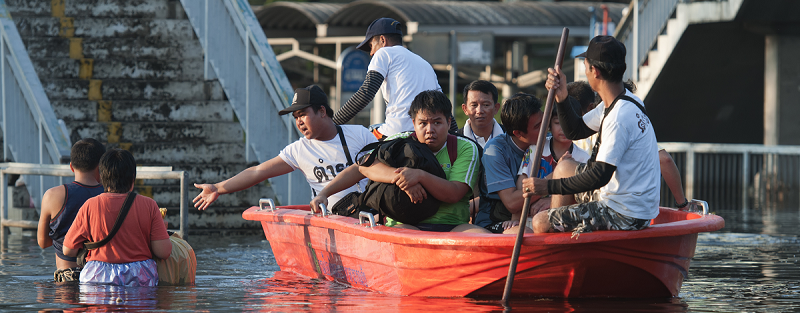
As climate change renders populated areas uninhabitable, what does justice look like for those who must relocate?
A forthcoming collection of papers in the journal Regional Environmental Change will address this question. Andreas Neef, professor in development studies at the University of Auckland, leads a Worldwide Universities Network (WUN) consortium that has given rise to the topical collection.
To exemplify the phenomenon of climate-induced migration, Neef draws from his research in Fiji, which has experienced 10 to 15 disasters over just a decade. First, he says, flooding caused staple crops like taro and cassava to rot in the ground and destroyed homes. People in the area responded by planting tree crops and rebuilding houses on stilts. Rather than protecting residents, however, these adaptations were liabilities in the next disaster, a cyclone that turned trees into projectiles and upturned elevated houses.
“These people are living in multi-risk environments where you don’t know which disaster you have to be prepared for next,” says Neef. To respond, Fiji has an internal relocation program that moves people living in untenably dangerous locations to higher elevations. But even those who move higher up the mountainous island are then at risk of landslides and flashfloods.
Is this avalanche of disasters due to climate change? Cyclones have always occurred in the region, for example, but not with such frequency, says Neef. “Some people talk about climate change as a threat multiplier, but other factors multiply threats of climate change. It’s not one-dimensional,” he says, naming water resources, conflict, and biodiversity loss as examples of these overlapping crises.
There’s more at stake than assigning blame, however. When people move transnationally in the wake of an acute disaster or due to long-term environmental degradation, who counts as a “climate migrant”? And are other countries obligated, legally or morally, to offer them refuge?
“The big question is whether there should be an extension of the 1951 Geneva Convention,” he says, referring to the principle that “a refugee should not be returned to a country where they face serious threats to their life or freedom.” If people’s safety and livelihoods disappear as a result of climate change, where do they go and for what kind of life? What remains for those who stay behind?
These questions fall under the purview of the topical collection, which is called “Climate Mobilities and Mobility Justice” and co-edited by Professor Craig Hutton (University of Southampton), Professor Petra Tschakert (University of Western Australia) and Associate Professor Bukola Salami (University of Alberta). For example, says Neef, New Zealand’s agricultural industry has flourished because of the extraction of phosphate resources from places like Nauru and Kiribati. Although its phosphate now comes from elsewhere—including conflict regions in the Western Sahara—this “massive exploitation of resources” is a colonial legacy that enriched New Zealand. That same agricultural activity also contributes nearly half of New Zealand’s greenhouse gas emissions, which contribute in turn to the climate crisis on Pacific Islands.
“Perhaps we need a new international policy framework that decides what a fair allocation of climate migrants to other countries would look like,” says Neef.
Papers in the topical collection Neef and colleagues have put together will consider climate-induced migration in contexts around the world as well as differing proposals regarding responsibility for climate migrants. Contributors come from a wide range of academic fields, including development studies, anthropology, human ecology, geography, and nursing.
“Ultimately, when people have nowhere else to go and need to be relocated, I would say countries like New Zealand have a moral obligation to take in people from Pacific Islands,” he says. “And not just on humanitarian grounds, but admitting their historic responsibilities for climate change and colonial era exploitation.”
The WUN partner institutions for “Climate-Induced Migration: Global Scope, Regional Impacts and National Policy Frameworks” are the University of Alberta, the University of Auckland, the University of Bristol, the University College Dublin, the University of Ghana, Maastricht University, the University of Massachusetts Amherst, the University of Rochester, the University of Southampton, Tecnológico de Monterrey, and the University of York.